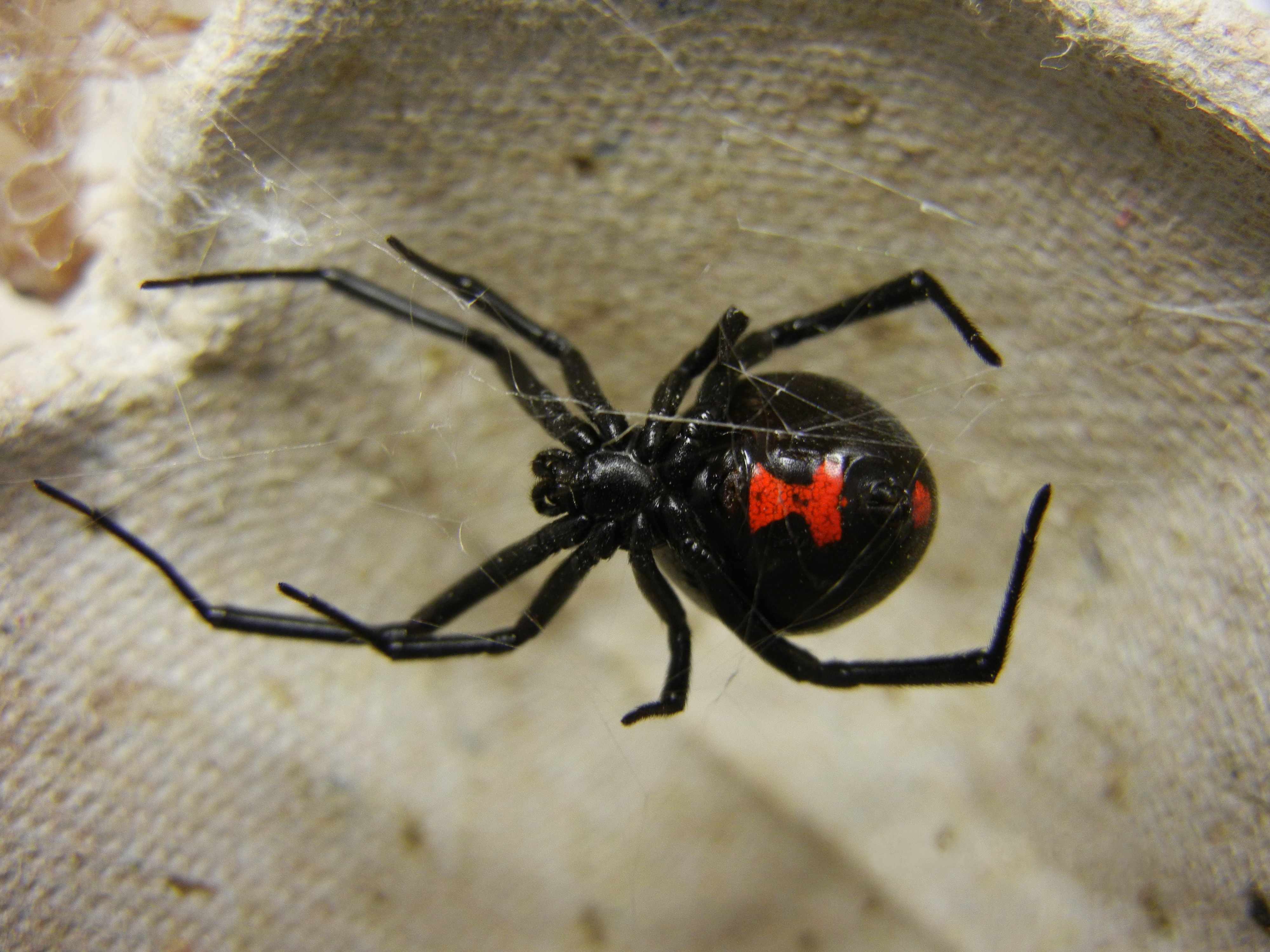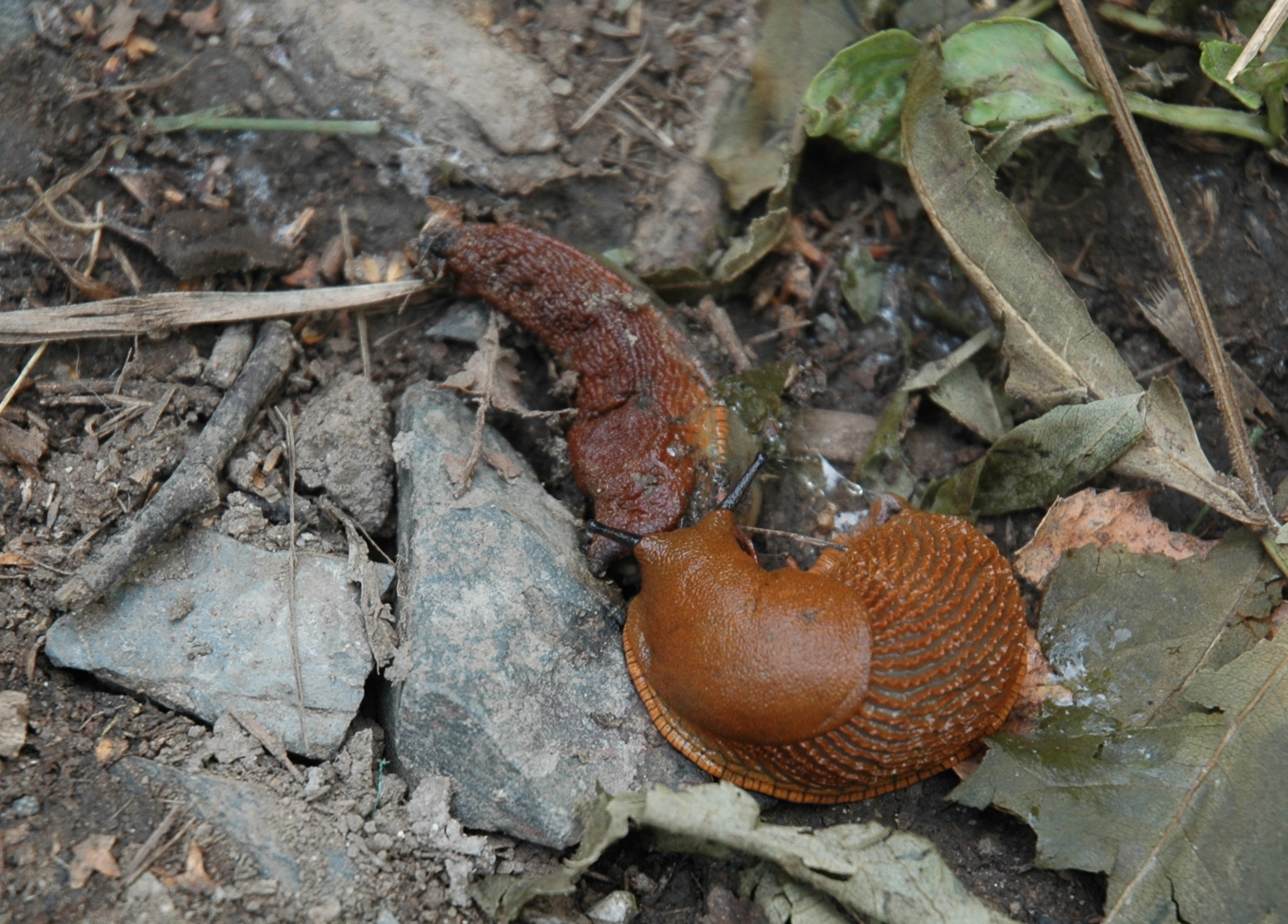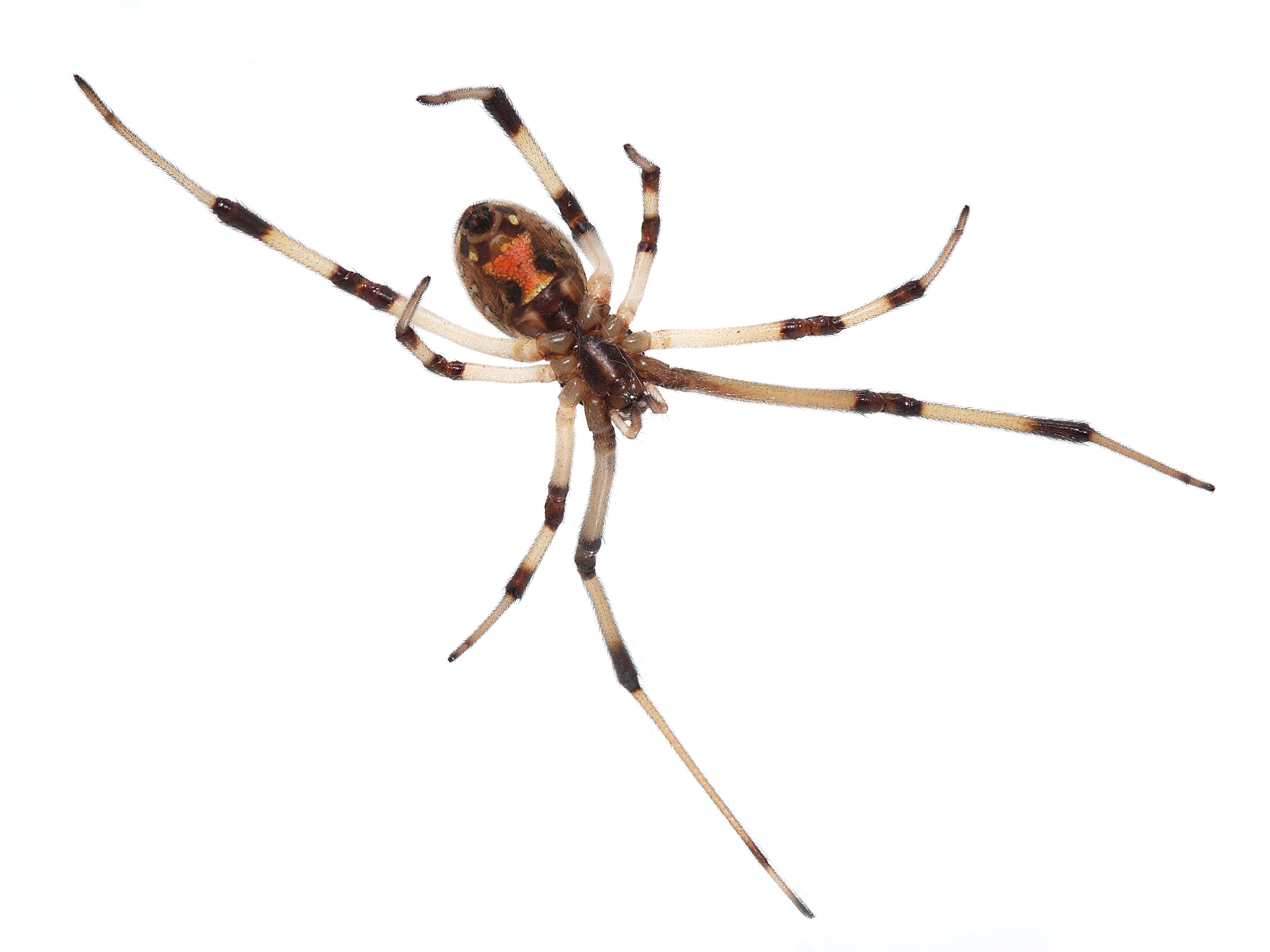|
Southern Black Widow
''Latrodectus mactans'', known as southern black widow or simply black widow, and the shoe-button spider, is a venomous species of spider in the genus '' Latrodectus''. The females are well known for their distinctive black and red coloring and for the fact that they will occasionally eat their mates after reproduction. The species is native to North America. The venom can cause pain and other symptoms, but is rarely fatal to healthy humans. Taxonomy ''Latrodectus mactans'' was first described by Johan Christian Fabricius in 1775, placing it in the genus '' Aranea''. It was transferred to the genus ''Latrodectus'' in 1837 by Charles Walckenaer and is currently placed in the family Theridiidae of the order Araneae. The species is closely related to ''Latrodectus hesperus'' (western black widow) and '' Latrodectus variolus'' (northern black widow). Members of the three species are often confused with the genus '' Steatoda'', the false widows. Prior to 1970, when the current taxon ... [...More Info...] [...Related Items...] OR: [Wikipedia] [Google] [Baidu] |
Johan Christian Fabricius
Johann Christian Fabricius (7 January 1745 – 3 March 1808) was a Danish zoologist, specialising in "Insecta", which at that time included all arthropods: insects, arachnids, crustaceans and others. He was a student of Carl Linnaeus, and is considered one of the most important entomologists of the 18th century, having named nearly 10,000 species of animals, and established the basis for the modern insect classification. Biography Johann Christian Fabricius was born on 7 January 1745 at Tønder in the Duchy of Schleswig, where his father was a doctor. He studied at the gymnasium at Altona and entered the University of Copenhagen in 1762. Later the same year he travelled together with his friend and relative Johan Zoëga to Uppsala, where he studied under Carl Linnaeus for two years. On his return, he started work on his , which was finally published in 1775. Throughout this time, he remained dependent on subsidies from his father, who worked as a consultant at Frederiks H ... [...More Info...] [...Related Items...] OR: [Wikipedia] [Google] [Baidu] |
Northern Black Widow
''Latrodectus variolus'', the northern black widow spider or northern widow, is a venomous species of spider in the genus ''Latrodectus'' of the family Theridiidae. The population is closely related to the southern black widow, ''Latrodectus mactans'', and the western black widow, ''Latrodectus hesperus'', of the genus. In North America, the species is commonly found in Middle Atlantic states (New Jersey, Delaware, Connecticut, Maryland). During the April–May mating season, it can travel north along the coast as far as Massachusetts in summer, and rarely, in southern Ontario and southern Quebec, Michigan, and at least as far northwest as parts of Wisconsin. A bite may cause latrodectism, and requires medical attention in the case of increasingly severe discomfort or spreading local redness accompanied by severe pain. Other symptoms, which can last up to a week, may include body aches, severe pain, fever, inflammation, nausea, and vomiting. Bites to humans are not typically dead ... [...More Info...] [...Related Items...] OR: [Wikipedia] [Google] [Baidu] |
Arachnids
Arachnids are arthropods in the class Arachnida () of the subphylum Chelicerata. Arachnida includes, among others, spiders, scorpions, ticks, mites, pseudoscorpions, harvestmen, camel spiders, whip spiders and vinegaroons. Adult arachnids have eight legs attached to the cephalothorax. In some species the frontmost pair of legs has converted to a sensory function, while in others, different appendages can grow large enough to take on the appearance of extra pairs of legs. Almost all extant arachnids are terrestrial, living mainly on land. However, some inhabit freshwater environments and, with the exception of the pelagic zone, marine environments as well. They comprise over 110,000 named species, of which 51,000 are species of spiders. The term is derived from the Greek word (''aráchnē'', 'spider'), from the myth of the hubristic human weaver Arachne, who was turned into a spider. Morphology Almost all adult arachnids have eight legs, unlike adult insects whic ... [...More Info...] [...Related Items...] OR: [Wikipedia] [Google] [Baidu] |
Chilopods
Centipedes (from Neo-Latin , "hundred", and Latin , "foot") are predatory arthropods belonging to the class Chilopoda (Ancient Greek , ''kheilos'', "lip", and Neo-Latin suffix , "foot", describing the forcipules) of the subphylum Myriapoda, an arthropod group which includes millipedes and other multi-legged animals. Centipedes are elongated segmented (metameric) animals with one pair of legs per body segment. All centipedes are venomous and can inflict painful stings, injecting their venom through pincer-like appendages known as forcipules or toxicognaths, which are actually modified legs instead of fangs. Despite the name, no species of centipede has exactly 100 legs; the number of pairs of legs is an odd number that ranges from 15 pairs to 191 pairs. Centipedes are predominantly generalist carnivorous, hunting for a variety of prey items that can be overpowered. They have a wide geographical range, which can be found in terrestrial habitats from tropical rainforests to des ... [...More Info...] [...Related Items...] OR: [Wikipedia] [Google] [Baidu] |
Diplopods
Millipedes (originating from the Latin , "thousand", and , "foot") are a group of arthropods that are characterised by having two pairs of jointed legs on most body segments; they are known scientifically as the class Diplopoda, the name derived from this feature. Each double-legged segment is a result of two single segments fused together. Most millipedes have very elongated cylindrical or flattened bodies with more than 20 segments, while pill millipedes are shorter and can roll into a tight ball. Although the name "millipede" derives from Latin for "thousand feet", no species was known to have 1,000 or more until the discovery in 2020 of ''Eumillipes persephone'', which can have over 1,300 legs. There are approximately 12,000 named species classified into 16 orders and around 140 families, making Diplopoda the largest class of myriapods, an arthropod group which also includes centipedes and other multi-legged creatures. Most millipedes are slow-moving detritivores, eating deca ... [...More Info...] [...Related Items...] OR: [Wikipedia] [Google] [Baidu] |
Woodlice
Woodlice are terrestrial isopods in the suborder Oniscidea. Their name is derived from being often found in old wood, and from louse, a parasitic insect, although woodlice are neither parasitic nor insects. Woodlice evolved from marine isopods which are presumed to have colonised land in the Carboniferous, though the oldest known fossils are from the Cretaceous period. This makes them quite unique among the crustaceans, being one of the few lineages to have transitioned into a fully terrestrial environment. Woodlice have many common names and although often referred to as terrestrial isopods, some species live semiterrestrially or have recolonised aquatic environments like those of the genus ''Ligia''. Woodlice in the families Armadillidae, Armadillidiidae, Eubelidae, Tylidae and some other genera can roll up into a roughly spherical shape (:wiktionary:conglobate, conglobate) as a defensive mechanism or to conserve moisture; others have partial rolling ability, but most cannot ... [...More Info...] [...Related Items...] OR: [Wikipedia] [Google] [Baidu] |
Cannibalism (zoology)
Cannibalism is the act of consuming another individual of the same species as food. Cannibalism is a common ecological interaction in the animal kingdom and has been recorded in more than 1,500 species. Human cannibalism is also well documented, both in ancient and in recent times. The rate of cannibalism increases in nutritionally poor environments as individuals turn to members of their own species as an additional food source.Elgar, M.A. & Crespi, B.J. (1992) ''Cannibalism: ecology and evolution among diverse taxa'', Oxford University Press, Oxford ngland New York. Cannibalism regulates population numbers, whereby resources such as food, shelter and territory become more readily available with the decrease of potential competition. Although it may benefit the individual, it has been shown that the presence of cannibalism decreases the expected survival rate of the whole population and increases the risk of consuming a relative. Other negative effects may include the increa ... [...More Info...] [...Related Items...] OR: [Wikipedia] [Google] [Baidu] |
Ecdysis
Ecdysis is the moulting of the cuticle in many invertebrates of the clade Ecdysozoa. Since the cuticle of these animals typically forms a largely inelastic exoskeleton, it is shed during growth and a new, larger covering is formed. The remnants of the old, empty exoskeleton are called exuviae. After moulting, an arthropod is described as ''teneral'', a ''callow''; it is "fresh", pale and soft-bodied. Within one or two hours, the cuticle hardens and darkens following a Tanning (leather), tanning process analogous to the production of leather. During this short phase the animal expands, since growth is otherwise constrained by the rigidity of the exoskeleton. Growth of the limbs and other parts normally covered by the hard exoskeleton is achieved by transfer of body fluids from soft parts before the new skin hardens. A spider with a small abdomen may be undernourished but more probably has recently undergone ecdysis. Some arthropods, especially large insects with tracheal respira ... [...More Info...] [...Related Items...] OR: [Wikipedia] [Google] [Baidu] |
Palpal Bulb
The two palpal bulbs – also known as palpal organs and genital bulbs – are the copulatory organs of a male spider. They are borne on the last segment of the pedipalps (the front "limbs" of a spider), giving the spider an appearance often described as like wearing boxing gloves. The palpal bulb does not actually produce sperm, being used only to transfer it to the female. Palpal bulbs are only fully developed in adult male spiders and are not completely visible until after the final moult. In the majority of species of spider, the bulbs have complex shapes and are important in identification. Structure The palpal bulb of a mature male spider is borne on the last segment of the pedipalp. This segment usually has touch-sensitive hairs (setae) with nerves leading to them. The bulb itself is entirely without nerves, and hence without sensory organs and muscles, since these depend on nerves for their functioning, although some spiders have one or two muscles external to the bulb and ... [...More Info...] [...Related Items...] OR: [Wikipedia] [Google] [Baidu] |
Hawaii
Hawaii ( ; ) is an island U.S. state, state of the United States, in the Pacific Ocean about southwest of the U.S. mainland. One of the two Non-contiguous United States, non-contiguous U.S. states (along with Alaska), it is the only state not on the North American mainland, the only state that is an archipelago, and the only state in the tropics. Hawaii consists of 137 volcanic islands that comprise almost the entire Hawaiian Islands, Hawaiian archipelago (the exception, which is outside the state, is Midway Atoll). Spanning , the state is Physical geography, physiographically and Ethnology, ethnologically part of the Polynesian subregion of Oceania. Hawaii's ocean coastline is consequently the List of U.S. states and territories by coastline, fourth-longest in the U.S., at about . The eight main islands, from northwest to southeast, are Niihau, Niihau, Kauai, Kauai, Oahu, Oahu, Molokai, Molokai, Lanai, Lānai, Kahoʻolawe, Kahoolawe, Maui, and Hawaii (island), Hawaii, a ... [...More Info...] [...Related Items...] OR: [Wikipedia] [Google] [Baidu] |
Hawaiian Islands
The Hawaiian Islands () are an archipelago of eight major volcanic islands, several atolls, and numerous smaller islets in the Pacific Ocean, North Pacific Ocean, extending some from the Hawaii (island), island of Hawaii in the south to northernmost Kure Atoll. Formerly called the Sandwich Islands by Europeans, the present name for the archipelago is derived from the name of its largest island, Hawaii. The archipelago sits on the Pacific Plate. The islands are exposed peaks of a great undersea mountain range known as the Hawaiian–Emperor seamount chain, formed by volcano, volcanic activity over the Hawaiian hotspot. The islands are about from the nearest continent and are part of the Polynesia subregion of Oceania. The U.S. state of Hawaii occupies the archipelago almost in its entirety (including the mostly uninhabited Northwestern Hawaiian Islands), with the sole exception of Midway Atoll (a United States Minor Outlying Island). Hawaii is the only U.S. state that is sit ... [...More Info...] [...Related Items...] OR: [Wikipedia] [Google] [Baidu] |
Latrodectus Geometricus
''Latrodectus geometricus'', commonly known as the brown widow, brown button spider, grey widow, brown black widow, house button spider or geometric button spider, is one of the widow spiders in the genus ''Latrodectus''. As such, it is a 'cousin' to the more infamous ''Latrodectus mactans'' (black widow). ''L. geometricus'' has black and white patterns on the sides of its abdomen as well as an orange-yellow colored hourglass shape marking. Their eggs are easily identified by points that project from all over the egg sacs. ''L. geometricus'' are found all over the world, but are believed to originate in Africa or South America. Their bites, though painful, are not considered to be dangerous. Taxonomy ''L. geometricus'' derives its name from the geometric patterning on its abdomen. However, the spider's coloring can and does darken over time and the pattern may become obscured. Similar widows include the ''L. rhodesiensis'', a brown-colored relative of ''L. geometricus'' wh ... [...More Info...] [...Related Items...] OR: [Wikipedia] [Google] [Baidu] |










